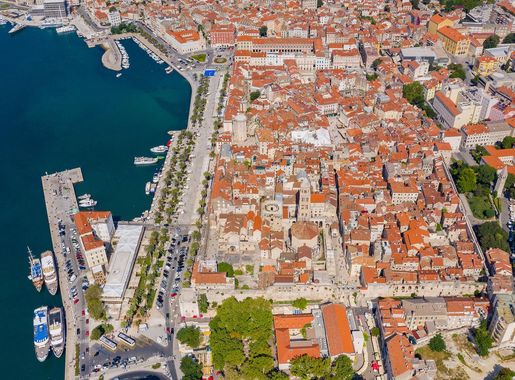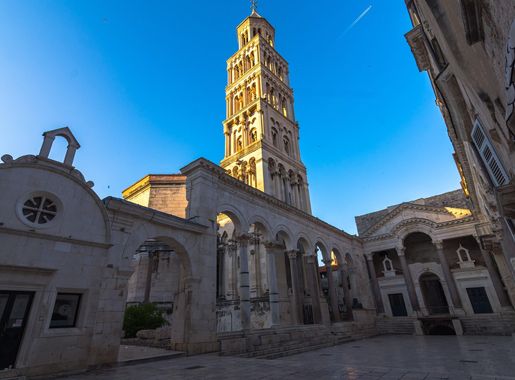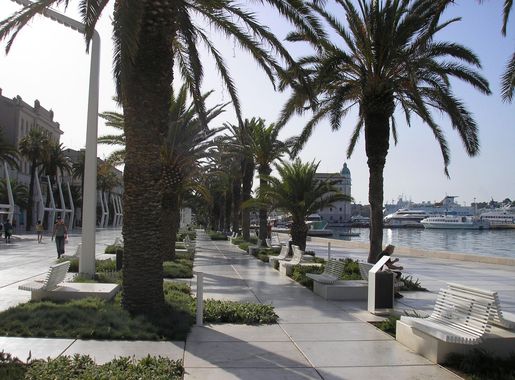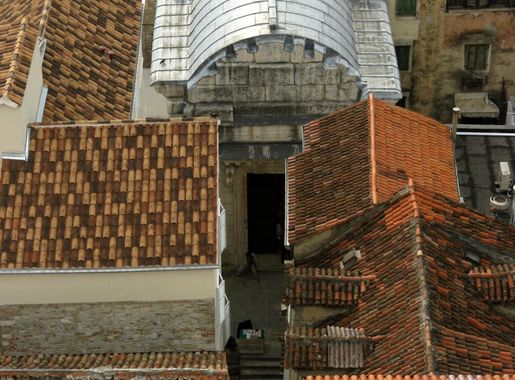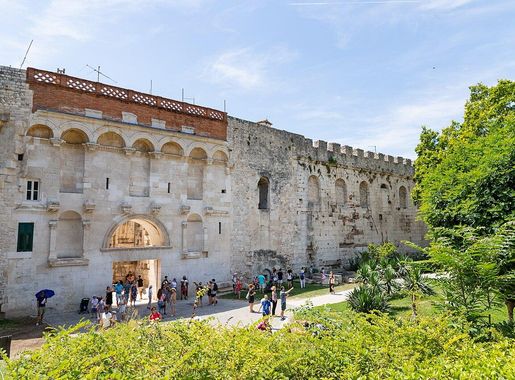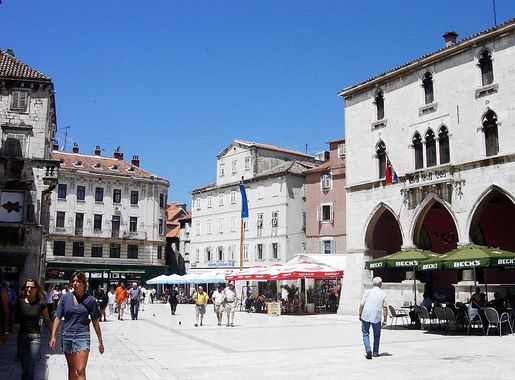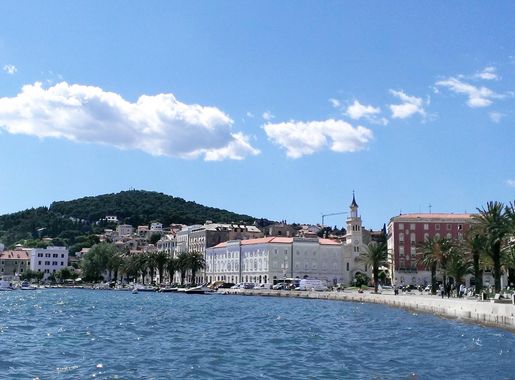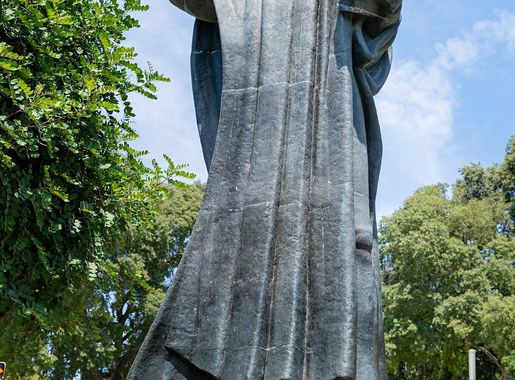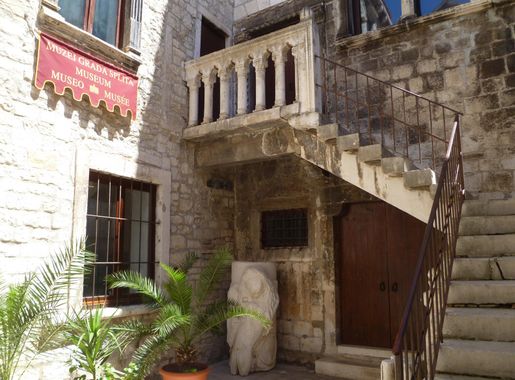
Exploring the Enchanting Old Town of Split
Discover the timeless allure of Old Town in Split, Croatia, where ancient history meets vibrant modern life along the stunning Dalmatian Coast.
Old Town in Split, Croatia, is a mesmerizing blend of ancient history and vibrant modern life. Nestled along the stunning Dalmatian Coast, this historic district invites you to step back in time while enjoying the charm of a lively Mediterranean atmosphere. Cobblestone streets weave through centuries-old buildings, each corner revealing a new story from the past. The centerpiece of Old Town is the magnificent Diocletian's Palace, a UNESCO World Heritage site that showcases Roman architecture in glorious detail. Wander through its labyrinthine corridors and marvel at the preserved ruins, bustling squares, and hidden courtyards. Beyond the palace, Old Town offers a delightful array of cafes, restaurants, and shops. Savor local delicacies at open-air markets or dine in cozy eateries that serve fresh seafood and traditional Croatian dishes. As you explore, you'll encounter street performers, artisans, and friendly locals eager to share their culture and traditions. Don't miss the chance to climb the bell tower of the Cathedral of Saint Domnius for a breathtaking panoramic view of Split and the Adriatic Sea. The Riva promenade is another highlight, where you can enjoy a leisurely stroll along the waterfront, soaking in the scenic views and vibrant atmosphere. Whether you're a history buff, a foodie, or simply seeking a picturesque escape, Old Town in Split offers an unforgettable experience that captures the heart and soul of Croatia.
Local tips in Old Town
- Wear comfortable shoes as the cobblestone streets can be uneven and require a lot of walking.
- Visit Diocletian's Palace early in the morning to avoid crowds and get the best photos.
- Bring cash, as some smaller shops and eateries in Old Town might not accept credit cards.
- Don't miss the local markets for fresh produce and unique souvenirs.
- Take your time to explore the narrow alleys and hidden courtyards for a more authentic experience.
- Climb the bell tower of the Cathedral of Saint Domnius for stunning views of the city and the sea.
- Enjoy a sunset walk along the Riva promenade for a magical end to your day.
Exploring the Enchanting Old Town of Split
Old Town in Split, Croatia, is a mesmerizing blend of ancient history and vibrant modern life. Nestled along the stunning Dalmatian Coast, this historic district invites you to step back in time while enjoying the charm of a lively Mediterranean atmosphere. Cobblestone streets weave through centuries-old buildings, each corner revealing a new story from the past. The centerpiece of Old Town is the magnificent Diocletian's Palace, a UNESCO World Heritage site that showcases Roman architecture in glorious detail. Wander through its labyrinthine corridors and marvel at the preserved ruins, bustling squares, and hidden courtyards. Beyond the palace, Old Town offers a delightful array of cafes, restaurants, and shops. Savor local delicacies at open-air markets or dine in cozy eateries that serve fresh seafood and traditional Croatian dishes. As you explore, you'll encounter street performers, artisans, and friendly locals eager to share their culture and traditions. Don't miss the chance to climb the bell tower of the Cathedral of Saint Domnius for a breathtaking panoramic view of Split and the Adriatic Sea. The Riva promenade is another highlight, where you can enjoy a leisurely stroll along the waterfront, soaking in the scenic views and vibrant atmosphere. Whether you're a history buff, a foodie, or simply seeking a picturesque escape, Old Town in Split offers an unforgettable experience that captures the heart and soul of Croatia.
Iconic landmarks you can’t miss
Diocletian's Palace
Explore the historical marvel of Diocletian's Palace in Split, where ancient Roman architecture meets vibrant local culture.
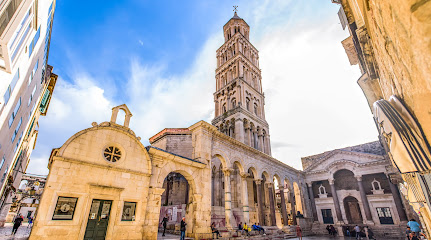
Golden Gate
Explore the stunning Golden Gate, an iconic historical landmark in Split, Croatia, and gateway to the ancient Diocletian's Palace.

Jupiter's Temple
Explore the ancient beauty of Jupiter's Temple in Split, a masterpiece of Roman architecture and a key landmark of Croatia's rich heritage.
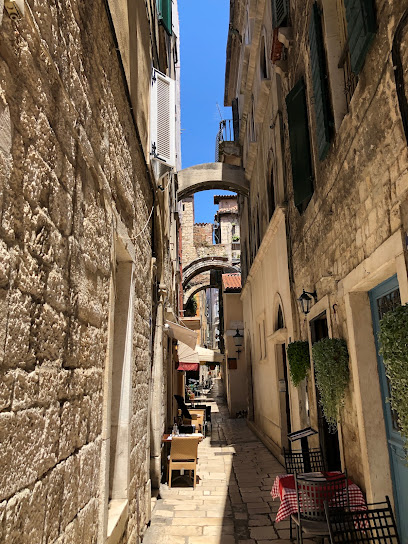
Old Town Hall
Explore the architectural beauty of the Old Town Hall in Split, a historic landmark that showcases the city's rich cultural heritage.
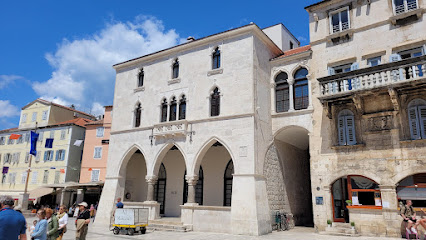
Mala Papalićeva palača
Explore the rich heritage and architectural beauty of Mala Papalićeva palača, a historical landmark nestled in the heart of Split, Croatia.
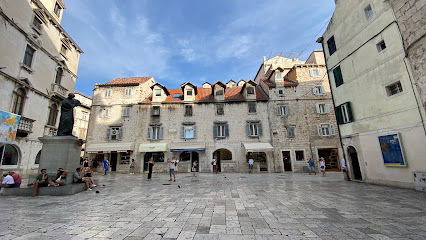
Street Let Me Pass
Discover the hidden gem of Street Let Me Pass in Split, where charming architecture and local culture come together for an unforgettable experience.
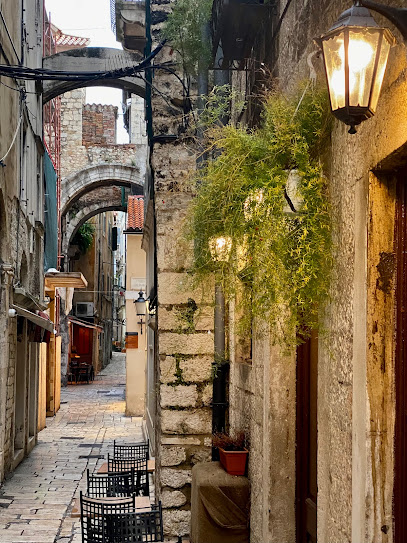
Model of the historical core of the city of Split
Experience the rich architectural heritage and vibrant culture of Split's historical core, a UNESCO World Heritage site blending ancient and modern charm.

Karepic Palace
Explore the historical marvel of Karepic Palace in Split, Croatia - a captivating journey through time and architecture.
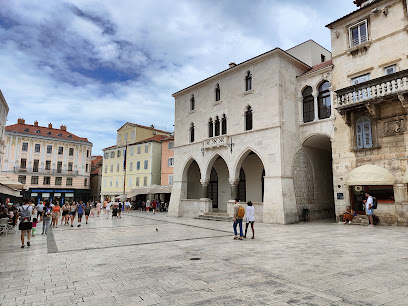
Pillars of Perpetual Love
Explore the captivating Pillars of Perpetual Love in Split, a stunning sculpture embodying romance, artistry, and breathtaking coastal views.
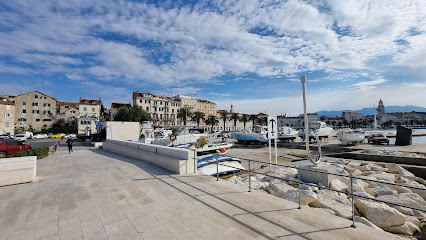
Erster Briefkasten der Stadt
Discover the First Mailbox of the City in Split, a historical landmark that symbolizes the rich heritage of communication in Croatia.
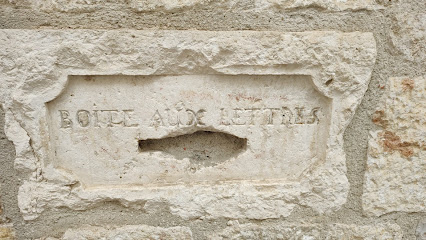
Unmissable attractions to see
Golden Gate
Explore the Golden Gate, a stunning historical landmark in Split, Croatia, and immerse yourself in the rich Roman heritage of this ancient city.
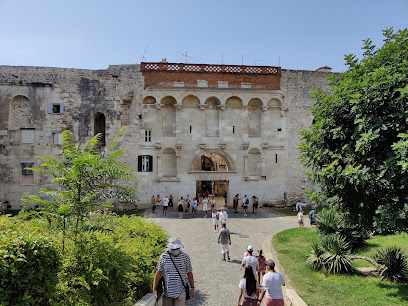
Diocletian's Cellars
Discover the awe-inspiring Diocletian's Cellars in Split, Croatia, a historical landmark revealing the grandeur of Roman architecture and culture.
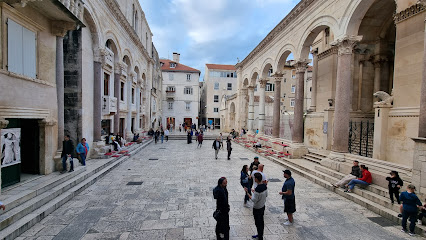
Jupiter's Temple
Discover the ancient allure of Jupiter's Temple in Split, a historical landmark that encapsulates the essence of Roman architecture and spirituality.

Split viewpoint (belvedere)
Experience the breathtaking panoramas at Split Viewpoint, a serene escape offering stunning views of the city and the Adriatic Sea.

Radić Brothers Square (Fruit Square)
Explore the vibrant Radić Brothers Square in Split, a historical landmark filled with culture, local cuisine, and beautiful architecture.
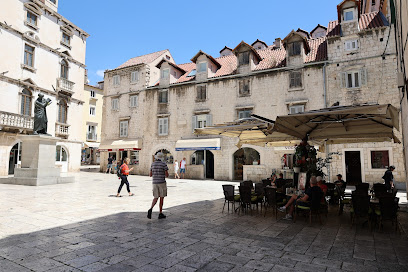
Saint Domnius Bell Tower
Discover the breathtaking views and rich history at the Saint Domnius Bell Tower, a must-visit landmark in Split's ancient heart.
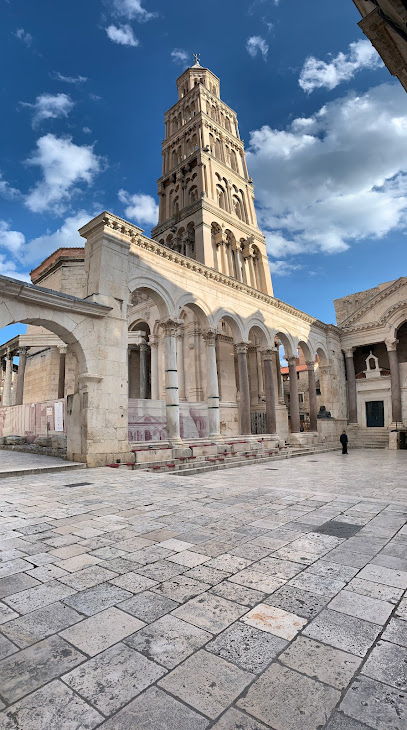
Mala Papalićeva palača
Discover the architectural beauty and rich history of Mala Papalićeva Palača in Split, a must-visit landmark for every traveler.
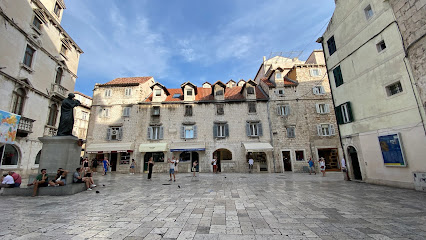
Split sign
Explore Split's iconic sign, a symbol of the city's rich history and vibrant culture, perfect for memorable photos and cultural experiences.
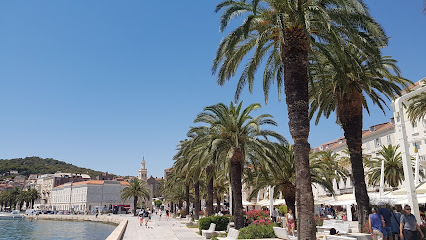
Street Let Me Pass
Explore the enchanting Street Let Me Pass in Split, where history meets modern charm amidst vibrant local culture.
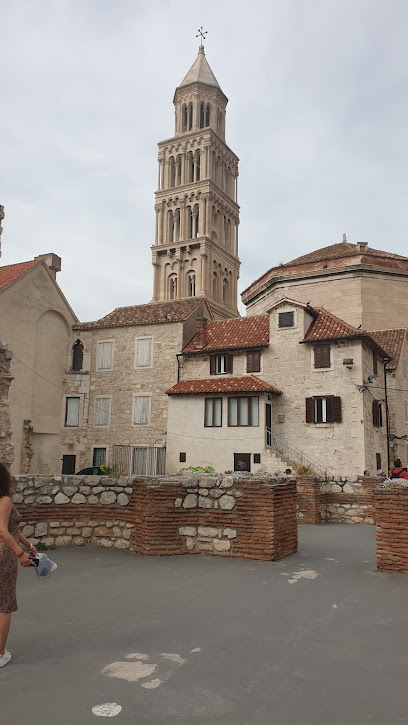
Iron Gate
Experience the majestic Iron Gate, a historic landmark in Split that showcases the city's rich cultural heritage and stunning architecture.
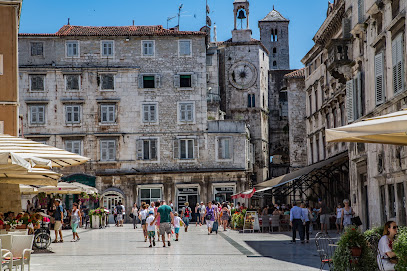
Stray cats gathering
Experience the heartwarming Stray Cats Gathering in Split, Croatia, where friendly felines add charm to the vibrant local culture.
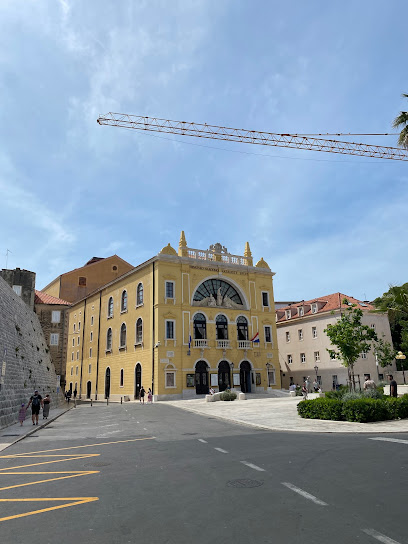
Game of Thrones - GoT - Rebellion of Slaves in Meereen - S04S04
Discover the enchanting Game of Thrones filming site in Meereen, Split, where history and fantasy intertwine amidst stunning architecture.
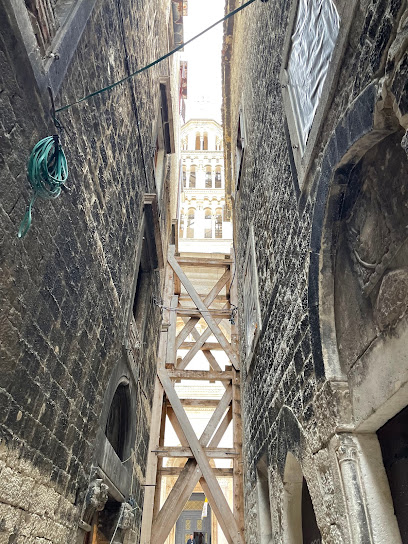
Model of the historical core of the city of Split
Explore the fascinating Model of the Historical Core of Split, a stunning bronze relief that brings the city's rich history to life in captivating detail.
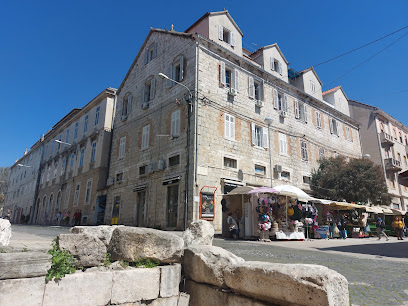
Viewpoint
Explore Split's stunning Varoš Viewpoint for breathtaking views of the Adriatic Sea and the historic city, perfect for unforgettable memories.
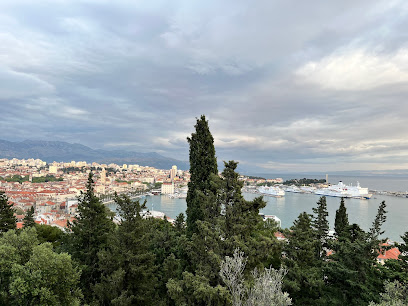
Essential places to dine
Chops Grill - Steak & Seafood
Experience exquisite steak and seafood at Chops Grill in Split – where culinary excellence meets vibrant atmosphere.
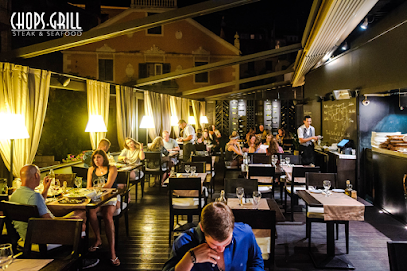
Corto Maltese Freestyle food
Experience the vibrant flavors of Mediterranean cuisine at Corto Maltese Freestyle Food in Split - where tradition meets innovation.
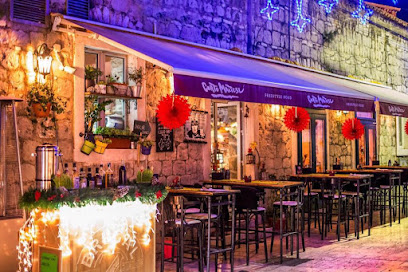
Fig Split
Experience modern Croatian cuisine at Fig Split – where local flavors meet innovative culinary artistry in an inviting atmosphere.
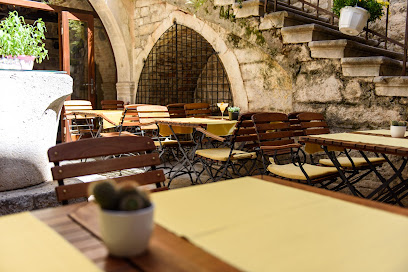
Portofino
Discover exquisite Croatian cuisine at Portofino, where fresh ingredients meet vibrant flavors in a charming setting in Split.
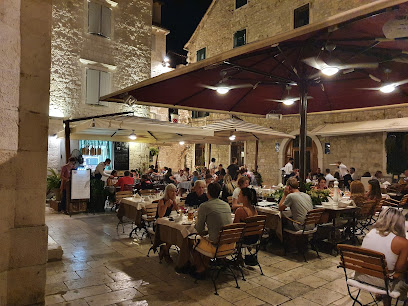
Apetit
Experience authentic Mediterranean cuisine at Apetit in Split, where fresh local ingredients meet warm hospitality for an unforgettable dining experience.
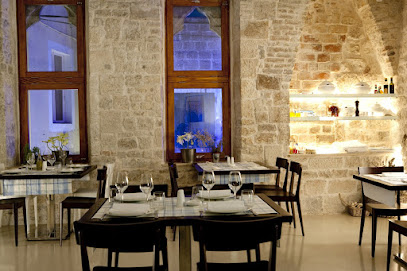
Zinfandel Food & Wine bar
Discover Zinfandel Food & Wine Bar: Where exquisite wines meet gourmet cuisine in the heart of Split.
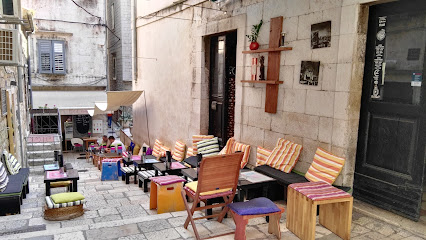
Konoba Korta
Discover health-conscious dining at Konoba Korta in Split, offering fresh seafood and meat dishes that celebrate local flavors.
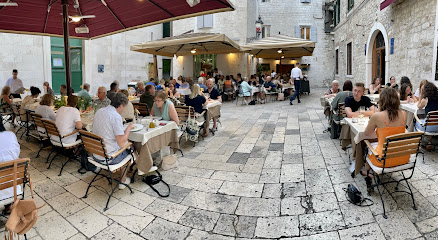
Temple Kitchen seafood & steak
Experience exquisite seafood and steak at Temple Kitchen in Split - where Mediterranean flavors meet Croatian hospitality.
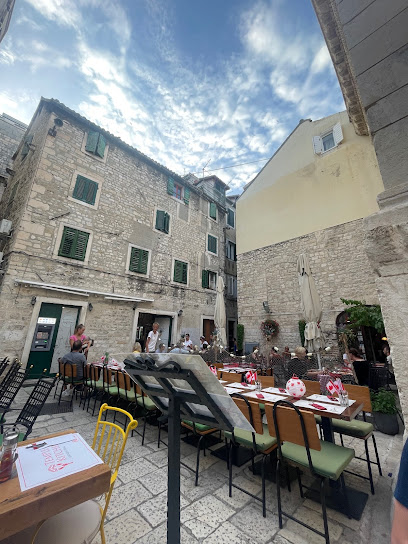
Kavana bar & cuisine
Experience culinary excellence at Kavana Bar & Cuisine in Split – where delicious food meets vibrant nightlife.
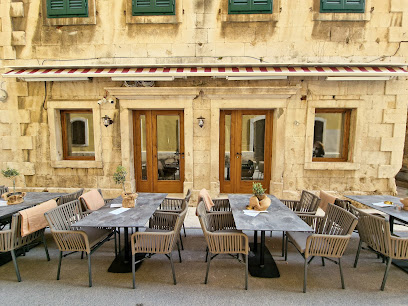
Konoba Pjaca
Experience authentic Croatian dining at Konoba Pjaca in Split – where tradition meets flavor in every dish.
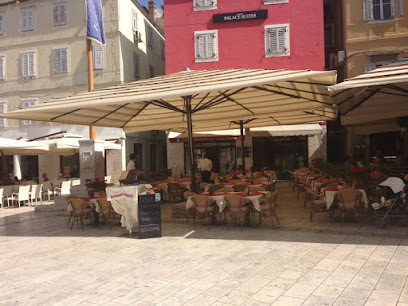
Markets, malls and hidden boutiques
Jam Jam
Explore Jam Jam in Split for a unique selection of home goods that blend modern style with Croatian charm, perfect for every home.
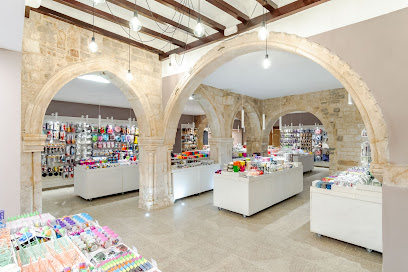
BREAK TIME Handmade Jewellery & Souvenirs
Explore a treasure trove of handmade jewelry and unique souvenirs at BREAK TIME in Split, where artistry meets tradition.
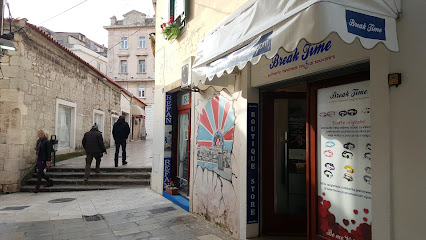
GET MORE artisan craft souvenir shop
Discover unique handmade gifts and authentic Croatian souvenirs at GET MORE artisan craft shop in Split, perfect for capturing your travel memories.
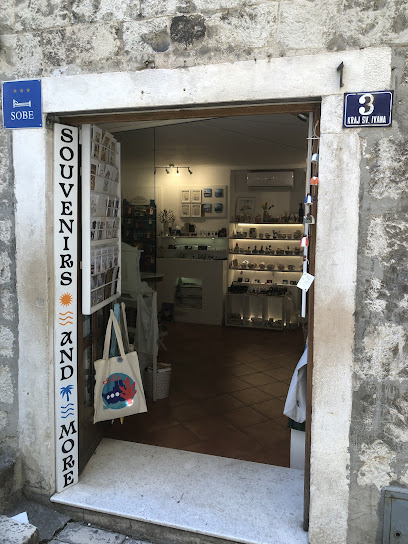
Souvenir Store Papi - Split
Explore unique souvenirs and local art at Souvenir Store Papi in Split, a must-visit for every traveler seeking authentic Croatian treasures.
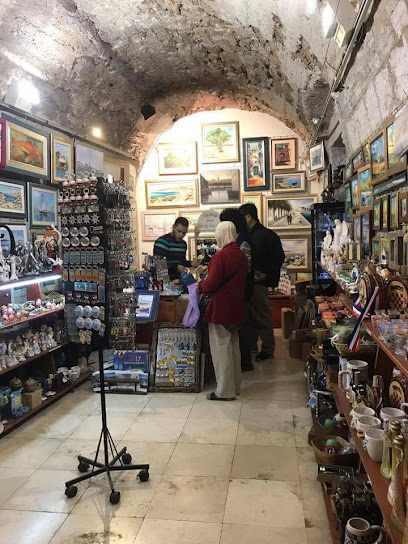
Designer Store KRUG
Explore Designer Store KRUG in Split for unique high-end fashion and accessories that embody luxury and style.
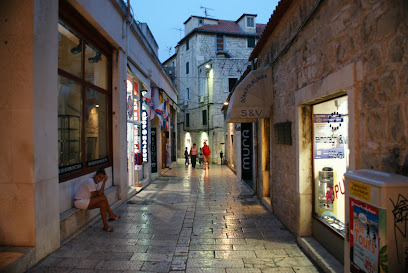
Otkrij Hrvatsku
Explore Otkrij Hrvatsku for unique souvenirs and authentic Croatian crafts that encapsulate the spirit of Split and its rich cultural heritage.
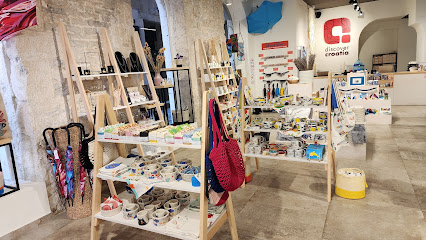
Aroma Dalmatia (Suverninica A Roma Dalmatia)
Explore Aroma Dalmatia for unique souvenirs and local treasures that capture the essence of Split, Croatia's enchanting coastal city.
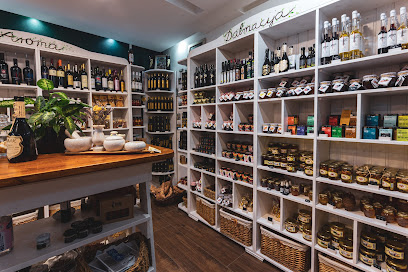
CRO Corner
Explore CRO Corner, Split’s premier gift shop, offering unique handcrafted treasures and authentic souvenirs that embody Croatian culture.
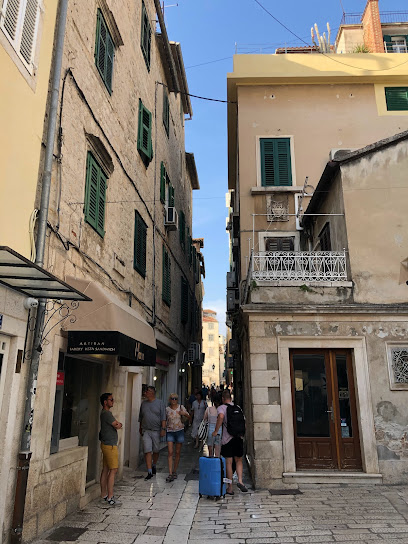
Christmas Shop Split
Explore the enchanting Christmas Shop in Split, where festive decorations and unique gifts create a magical holiday experience.
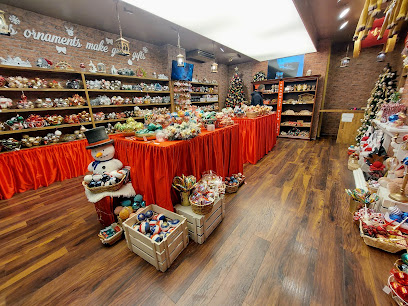
Duck Shop Split
Discover unique Croatian souvenirs and delightful gifts at Duck Shop Split, your go-to destination for local treasures in the heart of the city.

FRIDA Boutique
Discover stylish women's clothing and unique accessories at FRIDA Boutique, the fashion hub in the heart of Split, Croatia.
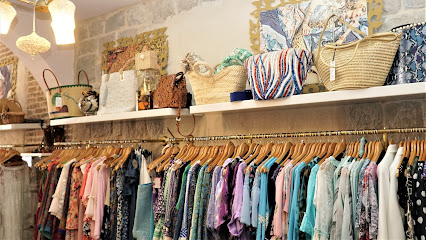
Souvenir & Gift Shop Lily
Explore Souvenir & Gift Shop Lily in Split for unique Croatian souvenirs and gifts that capture the essence of your travels.
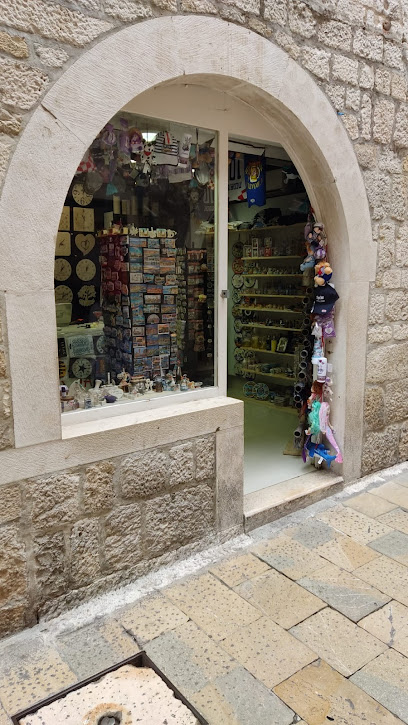
Duck Boutique Split
Discover unique gifts and local crafts at Duck Boutique Split, where every item tells a story of Croatia's vibrant culture.
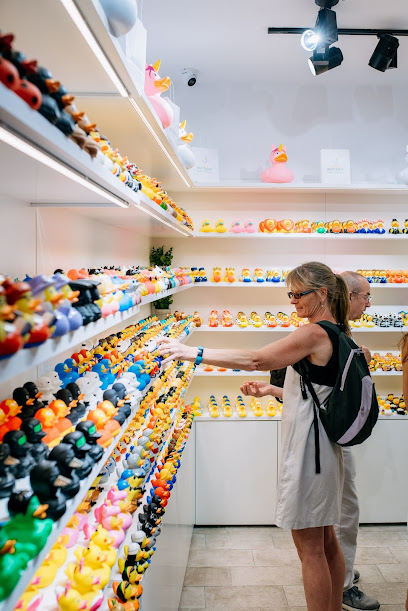
Souvenir Shop Priska Split
Discover authentic Croatian souvenirs at Souvenir Shop Priska in Split, where every piece reflects the beauty and culture of this stunning city.
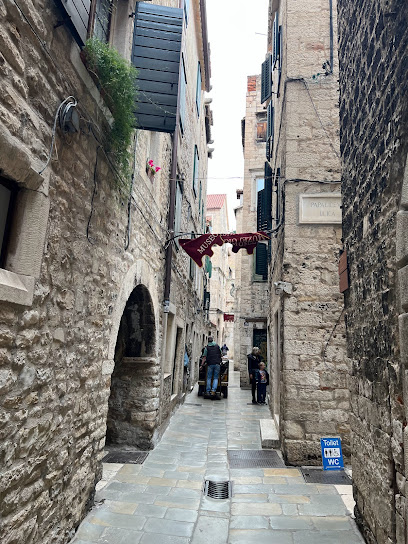
Magnet joli
Discover unique souvenirs and local crafts at Magnet Joli, the ultimate gift shop in the heart of Split, Croatia.
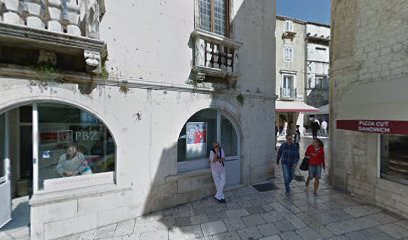
Essential bars & hidden hideouts
Fabrique Pub
Discover Fabrique Pub in Split – a lively venue offering delicious food, refreshing drinks, and a vibrant atmosphere for all travelers.
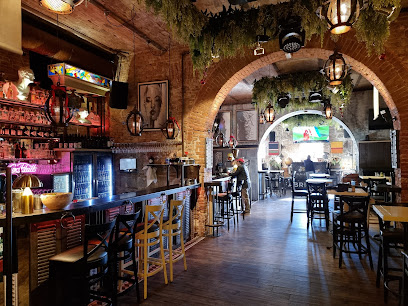
The Daltonist
Experience the vibrant culinary scene at The Daltonist, a bar and restaurant in Split offering breakfast, brunch, and exquisite tapas in a lively atmosphere.
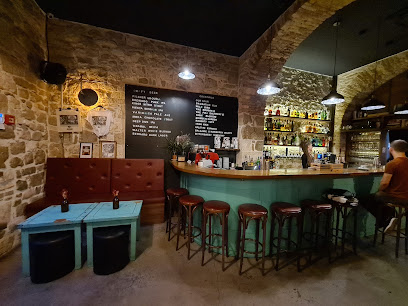
Charlie's Bar
Experience the local charm and vibrant atmosphere at Charlie's Bar in Split, where great drinks and friendly faces await.
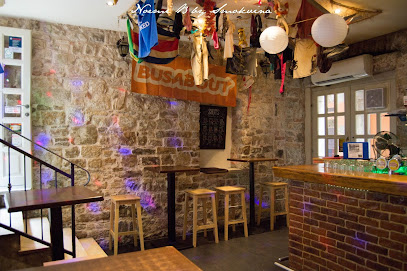
Zinfandel Food & Wine bar
Discover the exquisite blend of local flavors and exceptional wines at Zinfandel Food & Wine Bar in the heart of Split, Croatia.
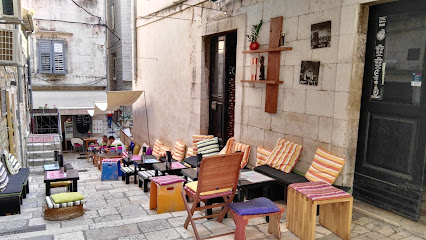
Marvlvs Library Jazz Bar
Immerse yourself in the enchanting atmosphere of Marvlvs Library Jazz Bar, where live jazz and fine wines create unforgettable moments in Split.
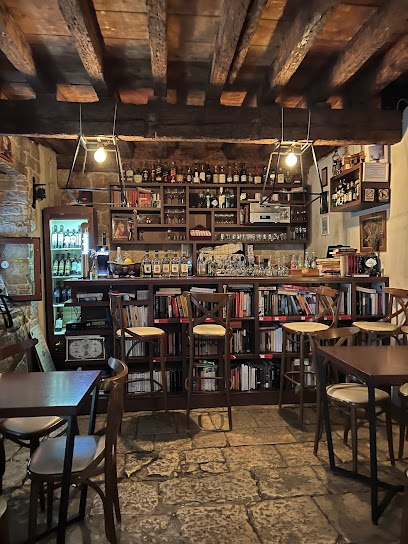
Antique Bar
Discover the charm of Antique Bar in Split, where vintage ambiance meets a vibrant selection of drinks and local culture.
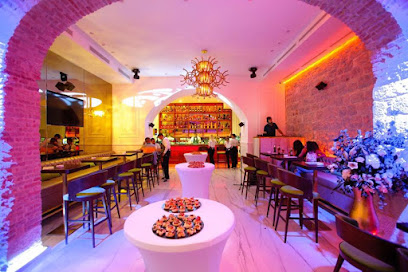
Pun Kufer Cocktail Bar
Experience the vibrant nightlife of Split at Pun Kufer Cocktail Bar, where exceptional cocktails and a cozy atmosphere await you.
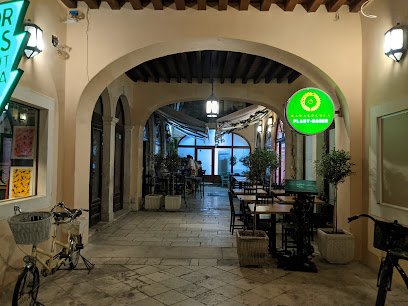
Leopold's Delicatessen Bar
Discover the heart of Split at Leopold's Delicatessen Bar – where local flavors meet a vibrant atmosphere.
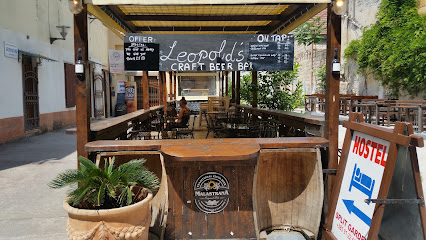
MoNIKa's Wine Bar
Discover the exquisite flavors of Croatia at MoNIKa's Wine Bar, where every glass tells a story in the heart of Split.
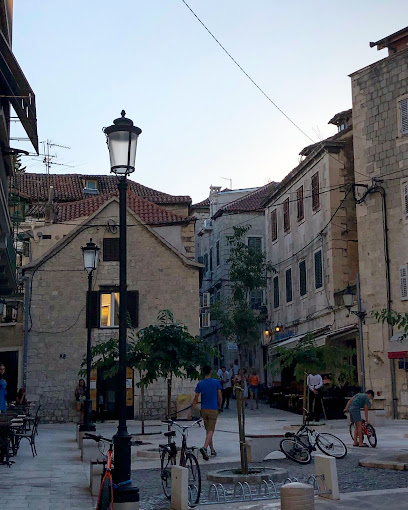
Rodrigo
Discover Rodrigo, a cozy bar in Split offering an extensive drink selection and a vibrant atmosphere perfect for relaxation and socializing.
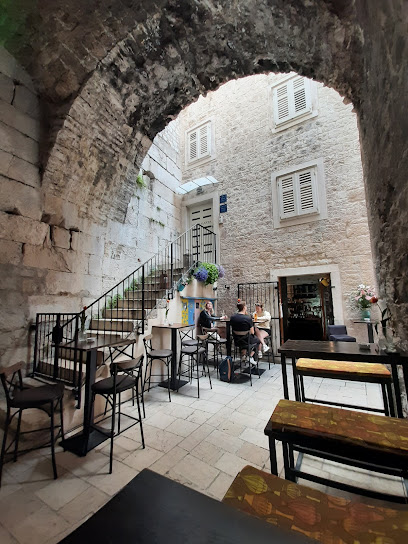
Local Phrases
-
- HelloBok
[bohk] - GoodbyeDoviđenja
[doh-vee-jen-ya] - YesDa
[dah] - NoNe
[neh] - Please/You're welcomeMolim
[moh-leem] - Thank youHvala
[h-vah-lah] - Excuse me/SorryOprosti
[oh-pros-tee] - How are you?Kako si?
[kah-koh see] - Fine. And you?Dobro. A ti?
[doh-broh ah tee] - Do you speak English?Govoriš li engleski?
[goh-voh-reesh lee ehn-glehs-kee] - I don't understandNe razumijem
[neh rah-zoo-mee-yem]
- HelloBok
-
- I'd like to see the menu, pleaseMogu li vidjeti meni, molim?
[moh-goo lee vee-dyeh-tee meh-nee moh-leem] - I don't eat meatNe jedem meso
[neh yeh-dem meh-soh] - Cheers!Živjeli!
[zhee-vyeh-lee] - I would like to pay, pleaseŽelim platiti, molim
[zheh-leem plah-tee-tee moh-leem]
- I'd like to see the menu, pleaseMogu li vidjeti meni, molim?
-
- Help!Pomoć!
[poh-mohch] - Go away!Otiđi!
[oh-tee-jee] - Call the Police!Pozovi policiju!
[poh-zoh-vee poh-lee-tsee-yoo] - Call a doctor!Pozovi doktora!
[poh-zoh-vee dohk-toh-rah] - I'm lostIzgubio sam se
[eez-goo-byoh sahm seh] - I'm illBolestan sam
[boh-leh-stahn sahm]
- Help!Pomoć!
-
- I'd like to buy...Želim kupiti...
[zheh-leem koo-pee-tee] - I'm just lookingSamo gledam
[sah-moh gleh-dahm] - How much is it?Koliko košta?
[koh-lee-koh koh-shta] - That's too expensiveTo je previše skupo
[toh yeh preh-vee-sheh skoo-poh] - Can you lower the price?Možete li spustiti cijenu?
[moh-zheh-teh lee spoos-tee-tee tsee-yeh-noo]
- I'd like to buy...Želim kupiti...
-
- What time is it?Koliko je sati?
[koh-lee-koh yeh sah-tee] - It's one o'clockJedan je sat
[yeh-dahn yeh saht] - Half past (10)Pola (deset)
[poh-lah deh-seht] - MorningJutro
[yoo-troh] - AfternoonPopodne
[poh-pohd-neh] - EveningVečer
[veh-chehr] - YesterdayJučer
[yoo-chehr] - TodayDanas
[dah-nahs] - TomorrowSutra
[soo-trah] - 1Jedan
[yeh-dahn] - 2Dva
[dvah] - 3Tri
[tree] - 4Četiri
[cheh-tee-ree] - 5Pet
[peht] - 6Šest
[shehst] - 7Sedam
[seh-dahm] - 8Osam
[oh-sahm] - 9Devet
[deh-veht] - 10Deset
[deh-seht]
- What time is it?Koliko je sati?
-
- Where's a/the...?Gdje je...?
[gdyeh yeh] - What's the address?Koja je adresa?
[koh-yah yeh ah-deh-sah] - Can you show me (on the map)?Možete li mi pokazati (na karti)?
[moh-zheh-teh lee mee poh-kah-zah-tee nah kahr-tee] - When's the next (bus)?Kada je sljedeći (autobus)?
[kah-dah yeh sleh-deh-chee ow-toh-boos] - A ticket (to ....)Jednu kartu (do ....)
[yehd-noo kahr-too doh]
- Where's a/the...?Gdje je...?
History of Old Town
-
The Old Town of Split is primarily built around the remarkable Diocletian's Palace, constructed in the late 3rd and early 4th centuries AD. This UNESCO World Heritage Site was built as a retirement residence for the Roman Emperor Diocletian, who ruled from 284 to 305 AD. The palace was a massive structure that combined the functions of a military fortress and a luxurious villa, showcasing the grandeur of Roman architecture and urban planning.
-
After the fall of the Western Roman Empire, the palace was repurposed by the local population as they sought refuge from invasions. By the 7th century, the palace complex had transformed into a fortified town, with residents utilizing the existing walls for protection. This transition marked the beginning of Split's evolution from a Roman stronghold into a thriving medieval settlement, with churches and homes being built within the palace's walls.
-
The medieval period saw the rise of the Christian church in Split, with the construction of significant religious structures such as the Cathedral of Saint Domnius, originally built as a mausoleum for Diocletian. By the 7th century, the cathedral became a pivotal place of worship, reflecting the growing influence of Christianity in the region. The adjacent bell tower is a prominent feature of the Old Town, showcasing a mix of architectural styles that evolved over centuries.
-
During the Renaissance and Baroque periods, Split's Old Town experienced cultural and architectural development. Wealthy merchants and nobility commissioned palaces and public buildings, leading to the construction of notable structures such as the People's Square (Narodni Trg) and the Riva promenade. This era reflected a fusion of local and Italian influences, enriching the cultural tapestry of Split and enhancing its status as a regional center.
-
In the 19th century, Split became part of the Austro-Hungarian Empire, which brought modernization and urban development to the Old Town. Infrastructure improvements, including the establishment of a railway and new public spaces, contributed to the city's growth. This period also saw the promotion of Split as a tourist destination, with its rich history and picturesque scenery attracting visitors from across Europe.
-
The 20th century brought challenges, including World War II and the subsequent socialist regime in Yugoslavia. Despite these challenges, efforts to preserve Split's historical heritage were initiated, leading to restoration projects that aimed to maintain the integrity of the Old Town. Today, Split's Old Town stands as a vibrant living museum, with its streets echoing the rich history and culture that have shaped the city over millennia.
Old Town Essentials
-
Old Town Split is centrally located and easily accessible from various neighborhoods. If you're arriving at Split's main train station or bus terminal, it's just a 15-minute walk to Old Town. Taxis and rideshare services are also available, typically costing around 10-15 kuna. For those coming from the Split Airport, shuttle buses operate regularly, taking about 30 minutes to reach the city center. Alternatively, taxis from the airport to Old Town usually cost between 250-350 kuna.
-
Old Town is best explored on foot due to its narrow, cobbled streets and pedestrian-only zones. Public transport options like buses and trams are limited in this area. However, nearby neighborhoods can be reached by local buses, which connect to the wider Split area. Bicycles can be rented, but be mindful of where you park them, as bike theft can occur. Always check for designated bike lanes when cycling.
-
Old Town Split is generally safe for tourists. However, it's wise to remain vigilant in crowded areas, especially around popular attractions like Diocletian's Palace. Petty crimes such as pickpocketing can occur, particularly in busy tourist spots and during peak season. Avoid poorly lit areas at night and exercise caution when using ATMs. While there are no specific high-crime areas, it's advisable to stay alert and keep belongings secure.
-
In case of emergencies, dial 112 for police, fire, or medical assistance in Croatia. The local hospital is located near the city center, and there are various pharmacies available for minor health issues. Always carry a copy of your identification and any necessary medical information. It’s advisable to have travel insurance that covers medical emergencies.
-
Fashion: Do dress modestly, especially when visiting churches. Avoid overly revealing clothing. Religion: Do respect local customs and traditions; remove your hat when entering places of worship. Public Transport: Do give up your seat to the elderly or disabled. Don't eat or drink on public transport. Greetings: Do greet locals with a friendly 'Dobar dan' (Good day). Don't use overly casual greetings unless you're familiar. Eating & Drinking: Do try local dishes, especially seafood, and enjoy traditional drinks. Don't waste food; it’s seen as disrespectful.
-
To experience Old Town like a local, visit the green market (Pazar) for fresh produce and local delicacies. Engage with local vendors and try traditional snacks. Early mornings are the best time to visit for a more authentic experience. Don't forget to partake in the local café culture; sitting in a café for hours is a cherished pastime. Finally, explore the small alleys and less-traveled paths to discover hidden gems away from the tourist crowds.
Nearby Cities to Old Town
-
Things To Do in Trogir
-
Things To Do in Hvar
-
Things To Do in Makarska
-
Things To Do in Mostar
-
Things To Do in Jajce
-
Things To Do in Zadar
-
Things To Do in Zenica
-
Things To Do in Bihac
-
Things To Do in Banja Luka
-
Things To Do in Sarajevo
-
Things To Do in Dubrovnik
-
Things To Do in Trebinje
-
Things To Do in Herceg Novi
-
Things To Do in Tuzla
-
Things To Do in Perast

